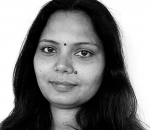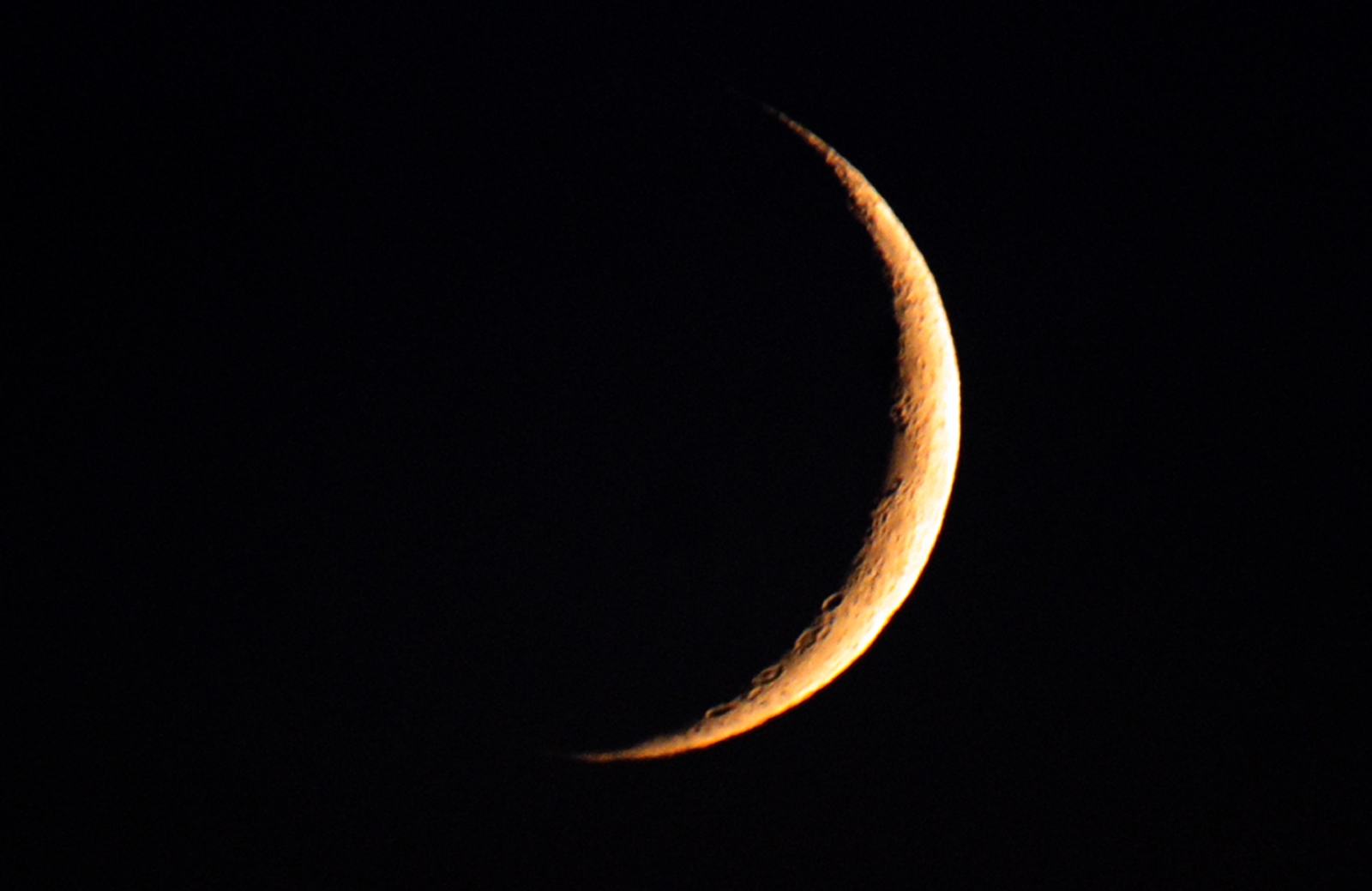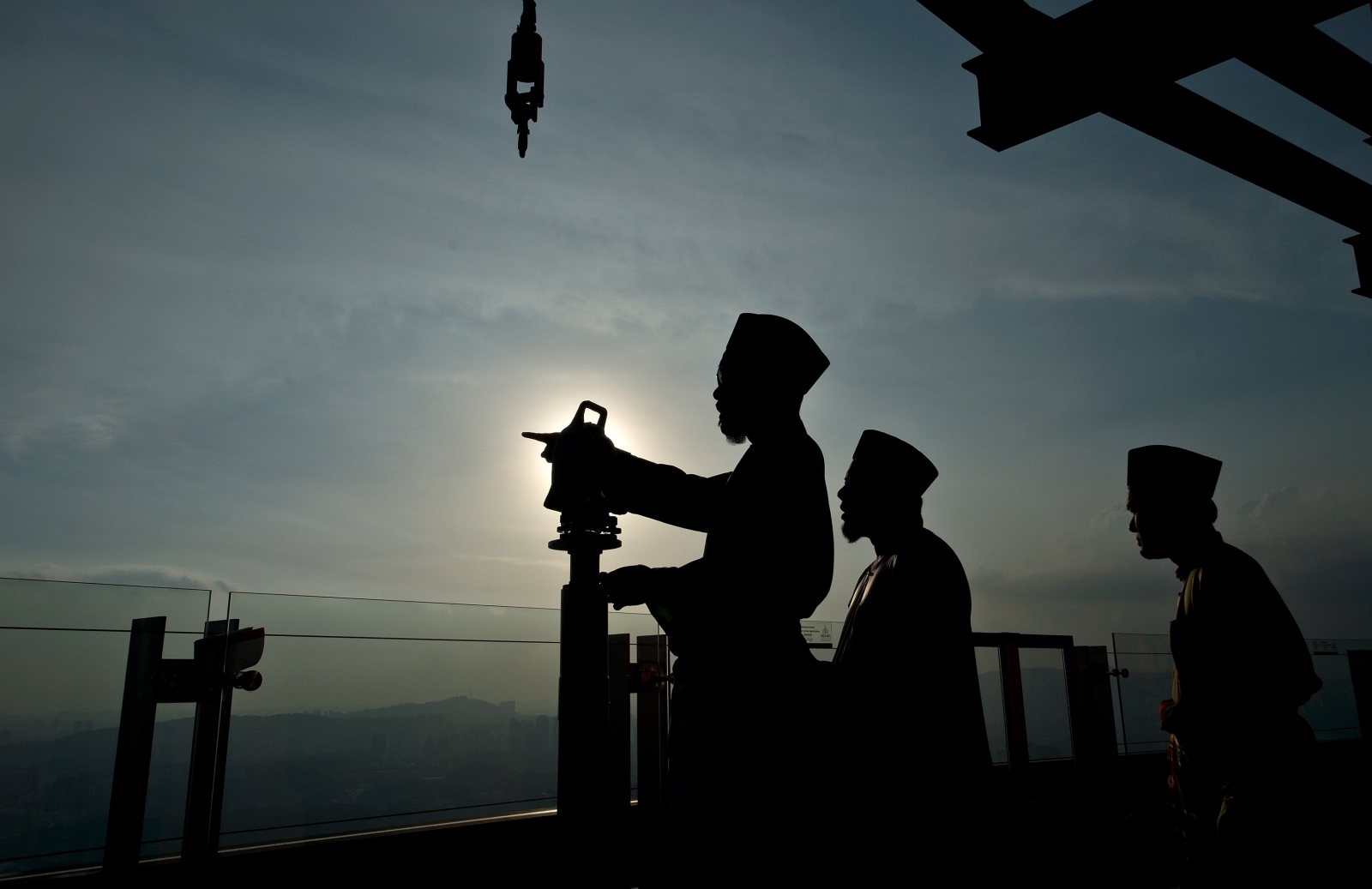Crescent in Islam is symbol of ending Ramadan and celebrating of eid, it has nothing to do with any pagan. it just shows passing of month. anyone from Islamic background can tell that.So is that Almaqah/moon god symbol the origin of the same crescent symbol...that modern day Muslims continue to use on their Moseques and flags???
And if so, why are the Abrahamic religions (in general) still so heavily influenced by paganism?
You are using an out of date browser. It may not display this or other websites correctly.
You should upgrade or use an alternative browser.
You should upgrade or use an alternative browser.
Somalis worshipped Almaqah not Waaq [THEORY]
- Thread starter horumar
- Start date
I'm not that invested in the answer tbh, it was just something I've wondered about previously. But since you've made a claim that opposes the other two responses I've got, would you mind providing a credible source on that?Crescent in Islam is symbol of ending Ramadan and celebrating of eid, it has nothing to do with any pagan. it just shows passing of month. anyone from Islamic background can tell that.
wait so did people in Sanaag also worship al maqaah or is it only in parts of western somaliland? Interesting nonetheless
embarassing
VIP
wait so did people in Sanaag also worship al maqaah or is it only in parts of western somaliland? Interesting nonetheless
Dude she just cropped a pic and made something up
According to Sada Mire, speaking of the northern coast:
https://link.springer.com/article/10.1007/s10437-015-9184-9
"The region seems to have formed part of the Himyarite and Sabaean cultures (Red Sea Sabaean/Himyarite and Pre-Askumite Empires (ca. Ninth Century BCE–Third Century CE)). The Phoenician and the Graeco-Roman worlds seem to have traded here too, as evidenced by material found at the ancient coastal cities, some mentioned in historic Greek records (Chittick 1975; Smith and Wright 1988). Also, the area was very much part of the pre-Axumite and Cushitic institutions of the Horn of Africa (The Archaeology and Art of burial: Megalithic Sites (ca. 2000 BCE–1500 CE), Decorated Stelae Cemeteries (ca. 1500 BCE–1500 CE), Red Sea Sabaean/Himyarite and Pre-Askumite Empires (ca. Ninth Century BCE–Third Century CE)), as well as the Aksumite Empire of the African Red Sea, that ruled even southern Arabia for a period (The Archaeology of Ancient Christianity in the Somali Context: Burials (ca. Fourth–Twelfth century CE))."
I would guess those symbols are Himyarite or Sabaean. Samaales don't take over this area until the 12th-13th centuries AD.
https://link.springer.com/article/10.1007/s10437-015-9184-9
"The region seems to have formed part of the Himyarite and Sabaean cultures (Red Sea Sabaean/Himyarite and Pre-Askumite Empires (ca. Ninth Century BCE–Third Century CE)). The Phoenician and the Graeco-Roman worlds seem to have traded here too, as evidenced by material found at the ancient coastal cities, some mentioned in historic Greek records (Chittick 1975; Smith and Wright 1988). Also, the area was very much part of the pre-Axumite and Cushitic institutions of the Horn of Africa (The Archaeology and Art of burial: Megalithic Sites (ca. 2000 BCE–1500 CE), Decorated Stelae Cemeteries (ca. 1500 BCE–1500 CE), Red Sea Sabaean/Himyarite and Pre-Askumite Empires (ca. Ninth Century BCE–Third Century CE)), as well as the Aksumite Empire of the African Red Sea, that ruled even southern Arabia for a period (The Archaeology of Ancient Christianity in the Somali Context: Burials (ca. Fourth–Twelfth century CE))."
I would guess those symbols are Himyarite or Sabaean. Samaales don't take over this area until the 12th-13th centuries AD.
Wtf did you even read what I said? Make what up? Do you even know what these are?Dude she just cropped a pic and made something up
The symbol was found in Dhaymoole, don't know what gobol that iswait so did people in Sanaag also worship al maqaah or is it only in parts of western somaliland? Interesting nonetheless
Samaales were recorded to be on the cost since the Roman times, they were pirates that attacked foreign vessels. Three symbols were around 2000 years old so these were written by samaalesAccording to Sada Mire, speaking of the northern coast:
https://link.springer.com/article/10.1007/s10437-015-9184-9
"The region seems to have formed part of the Himyarite and Sabaean cultures (Red Sea Sabaean/Himyarite and Pre-Askumite Empires (ca. Ninth Century BCE–Third Century CE)). The Phoenician and the Graeco-Roman worlds seem to have traded here too, as evidenced by material found at the ancient coastal cities, some mentioned in historic Greek records (Chittick 1975; Smith and Wright 1988). Also, the area was very much part of the pre-Axumite and Cushitic institutions of the Horn of Africa (The Archaeology and Art of burial: Megalithic Sites (ca. 2000 BCE–1500 CE), Decorated Stelae Cemeteries (ca. 1500 BCE–1500 CE), Red Sea Sabaean/Himyarite and Pre-Askumite Empires (ca. Ninth Century BCE–Third Century CE)), as well as the Aksumite Empire of the African Red Sea, that ruled even southern Arabia for a period (The Archaeology of Ancient Christianity in the Somali Context: Burials (ca. Fourth–Twelfth century CE))."
I would guess those symbols are Himyarite or Sabaean. Samaales don't take over this area until the 12th-13th centuries AD.
Dude she just cropped a pic and made something up
dhaymoole is in maroodi jeexWtf did you even read what I said? Make what up? Do you even know what these are?
The symbol was found in Dhaymoole, don't know what gobol that is
I'm not that invested in the answer tbh, it was just something I've wondered about previously. But since you've made a claim that opposes the other two responses I've got, would you mind providing a credible source on that?
You don't need to be Professor Robert Langdon to know that crescent stands for eid and end of Ramadan. Muslim people are watching the skies all night to see the crescent.
Eid al-Fitr 2017: Crescent moon sighting of the month of Shawwal will mark the end of Ramadan
This year the moon is expected to be visible on Saturday, 24 June.
-

By Kabita MaharanaUpdated June 24, 2017 07:42 BST

The sighting of the crescent moon marks the beginning of festivities with Eid al-FitrGetty
Muslims around the world are eagerly waiting to celebrate Eid al-Fitr that marks the end of Ramadan. The festivities will start after the crescent moon is viewed, marking the beginning of Shawwal, the 10th month of the Islamic lunar calendar.
Muslim countries have formed specific committees to sight the crescent moon to end the month of Ramadan and begin Eid celebration. This year the moon is expected to be visible on Saturday 24 June. However, the celebration varies from country to country, depending on the appearance of the moon.
Eid al-Fitr 2017: When does Eid start and Ramadan end?
A website, which follows scientific methods to confirm the moon sighting, claims that there is a "good possibility of sighting in Peru, Ecuador, Hawaii and Polynesian Islands" on 24 June.
Why advertise with us
Asian countries may have to wait for one more day to begin the festivities as astronomers predict that the moon will be not be visible in most part of the continent.
The Supreme Court in Saudi Arabia has called all the Muslims of the kingdom to look towards the sky and report the sighting of the first moon of Shawwal.
During the month of Ramadan, Muslims abstain from food, drinking, smoking and engaging in sexual pleasures from dawn to dusk. Considered one of the five pillars of Islam, devotees immerse themselves in prayers and charity during the holy month.

The Supreme Court in Saudi Arabia has called all the Muslims of the kingdom to look towards the sky and report the sighting of the first moon of Shawwal.Getty
Eid in UK: According to a UK-based website dedicated to moon sighting: "The crescent visibility map below for Shawwal 1438 shows that moon will be born on 24 June 2017 at 02:31 GMT/UT, but it will not be visible by the naked-eye anywhere in the UK/Morocco region on that date."
Why advertise with us
The website has also warned that the moon may not be visible from Middle East to West Africa and urged Muslims to not to fall prey to false alarms. The moon, however, will be visible around the world on Sunday 25 June.
To commemorate the occasion, Muslims wear new clothes, and start the day with a morning prayer. The festivities last for almost three days and people take part in the celebration by greeting each other "Eid Mubarak".
Samaales were recorded to be on the cost since the Roman times, they were pirates that attacked foreign vessels. Three symbols were around 2000 years old so these were written by samaales
I would love to see a link for that.

embarassing
VIP
I'm not that invested in the answer tbh, it was just something I've wondered about previously. But since you've made a claim that opposes the other two responses I've got, would you mind providing a credible source on that?
what we said isn't in contradiction though
According to Sada Mire, speaking of the northern coast:
https://link.springer.com/article/10.1007/s10437-015-9184-9
"The region seems to have formed part of the Himyarite and Sabaean cultures (Red Sea Sabaean/Himyarite and Pre-Askumite Empires (ca. Ninth Century BCE–Third Century CE)). The Phoenician and the Graeco-Roman worlds seem to have traded here too, as evidenced by material found at the ancient coastal cities, some mentioned in historic Greek records (Chittick 1975; Smith and Wright 1988). Also, the area was very much part of the pre-Axumite and Cushitic institutions of the Horn of Africa (The Archaeology and Art of burial: Megalithic Sites (ca. 2000 BCE–1500 CE), Decorated Stelae Cemeteries (ca. 1500 BCE–1500 CE), Red Sea Sabaean/Himyarite and Pre-Askumite Empires (ca. Ninth Century BCE–Third Century CE)), as well as the Aksumite Empire of the African Red Sea, that ruled even southern Arabia for a period (The Archaeology of Ancient Christianity in the Somali Context: Burials (ca. Fourth–Twelfth century CE))."
I would guess those symbols are Himyarite or Sabaean. Samaales don't take over this area until the 12th-13th centuries AD.
Keep your guessing game to yourself, you just spent one year in Somalia in 60s and you are not expert in our history and most of your information are from modified on Wikipedia.
All this article shows is people shifting their behavior/celebration according to moon sighting, this doesn't say WHY they do such a thing. And thus, the article also doesn't negate the fact that crescent symbolism began as a pagan practice.You don't need to be Professor Robert Langdon to know that crescent stands for eid and end of Ramadan. Muslim people are watching the skies all night to see the crescent.
Eid al-Fitr 2017: Crescent moon sighting of the month of Shawwal will mark the end of Ramadan
This year the moon is expected to be visible on Saturday, 24 June.

By Kabita MaharanaUpdated June 24, 2017 07:42 BST

The sighting of the crescent moon marks the beginning of festivities with Eid al-FitrGetty
Muslims around the world are eagerly waiting to celebrate Eid al-Fitr that marks the end of Ramadan. The festivities will start after the crescent moon is viewed, marking the beginning of Shawwal, the 10th month of the Islamic lunar calendar.
Muslim countries have formed specific committees to sight the crescent moon to end the month of Ramadan and begin Eid celebration. This year the moon is expected to be visible on Saturday 24 June. However, the celebration varies from country to country, depending on the appearance of the moon.
Eid al-Fitr 2017: When does Eid start and Ramadan end?
A website, which follows scientific methods to confirm the moon sighting, claims that there is a "good possibility of sighting in Peru, Ecuador, Hawaii and Polynesian Islands" on 24 June.
Why advertise with us
Asian countries may have to wait for one more day to begin the festivities as astronomers predict that the moon will be not be visible in most part of the continent.
The Supreme Court in Saudi Arabia has called all the Muslims of the kingdom to look towards the sky and report the sighting of the first moon of Shawwal.
During the month of Ramadan, Muslims abstain from food, drinking, smoking and engaging in sexual pleasures from dawn to dusk. Considered one of the five pillars of Islam, devotees immerse themselves in prayers and charity during the holy month.

The Supreme Court in Saudi Arabia has called all the Muslims of the kingdom to look towards the sky and report the sighting of the first moon of Shawwal.Getty
Eid in UK: According to a UK-based website dedicated to moon sighting: "The crescent visibility map below for Shawwal 1438 shows that moon will be born on 24 June 2017 at 02:31 GMT/UT, but it will not be visible by the naked-eye anywhere in the UK/Morocco region on that date."
Why advertise with us
The website has also warned that the moon may not be visible from Middle East to West Africa and urged Muslims to not to fall prey to false alarms. The moon, however, will be visible around the world on Sunday 25 June.
To commemorate the occasion, Muslims wear new clothes, and start the day with a morning prayer. The festivities last for almost three days and people take part in the celebration by greeting each other "Eid Mubarak".
She opposes the possibility that the first source of the crescent symbol [which Islam uses] is rooted in paganism, that's the part I was referencing. The crescent may indeed play a significant role due to Ramadan/Eid festivities (in addition to the pagan stuff) but Canuck claims that "it has nothing to do with any pagan"...how is that not contradictory to what you and Horumar have admitted???what we said isn't in contradiction though
Keep your guessing game to yourself, you just spent one year in Somalia in 60s and you are not expert in our history and most of your information are from modified on Wikipedia.
Sada Mire is not exactly Wikipedia, which is still more accurate than many of your sources. You should start backing up some of your glossy photos and unsupported claims. The Yibir are Sab and J2?

All this article shows is people shifting their behavior/celebration according to moon sighting, this doesn't say WHY they do such a thing. And thus, the article also doesn't negate the fact that crescent symbolism began as a pagan practice.
She opposes the possibility that the first source of the crescent symbol [which Islam uses] is rooted in paganism, that's the part I was referencing. The crescent may indeed play a significant role due to Ramadan/Eid festivities (in addition to the pagan stuff) but Canuck claims that "it has nothing to do with any pagan"...how is that not contradictory to what you and Horumar have admitted???
You are acting like bimbo that needs to spoon feed some simple facts. Ramadan is month part of Islamic calendar that depends on lunar calendar unlike the Julia or Gregorian calendar that uses solar.
The Islamic, Muslim, or Hijri calendar (Arabic: التقويم الهجري at-taqwīm al-hijrī) is a lunar calendar consisting of 12 months in a year of 354 or 355 days. It is used (often alongside the Gregorian calendar) to date events in many Muslim countries. It is also used by Muslims to determine the proper days of Islamic holidays and rituals, such as the annual period of fasting and the proper time for the pilgrimage to Mecca.
Dude she just cropped a pic and made something up
I'm 100% sure she's not fit with her constant mood swings
Sada Mire is not exactly Wikipedia, which is still more accurate than many of your sources. You should start backing up some of your glossy photos and unsupported claims. The Yibir are Sab and J2?
Sade Mire is expert and I am totally agree with her. And most of my history reading are from Yemeni forums. What I don't like is this part" I would guess those symbols are Himyarite or Sabaean. Samaales don't take over this area until the 12th-13th centuries AD."
The Crescent appears all over the near East and has nothing to do with Islam. It is pagan in origin, and has been used by Mesopotamian/Near Eastern civilisations for thousands of years. Most likely a remnant from the days the people worshipped middle-eastern moon gods.
it is not bootyclapping to learn the history of your religion. Pick a book.
A lunar calendar is a calendarbased upon cycles of the Moon's phases (synodic months), in contrast to solar calendars based solely upon the solar year. A purely lunar calendar is also distinguished from lunisolar calendars whose lunar months are brought into alignment with the solar year through some process of intercalation. The details of when months begin varies from calendar to calendar, with some using new, full, or crescent moons and others employing detailed calculations.
I would love to see a link for that.
I saw it before, will try to link when i find it again
Canuck show some respect, this cadaan man was in Somalia before you were even born, fix upYou are acting like bimbo that needs to spoon feed some simple facts. Ramadan is month part of Islamic calendar that depends on lunar calendar unlike the Julia or Gregorian calendar that uses solar.
The Islamic, Muslim, or Hijri calendar (Arabic: التقويم الهجري at-taqwīm al-hijrī) is a lunar calendar consisting of 12 months in a year of 354 or 355 days. It is used (often alongside the Gregorian calendar) to date events in many Muslim countries. It is also used by Muslims to determine the proper days of Islamic holidays and rituals, such as the annual period of fasting and the proper time for the pilgrimage to Mecca.
Tag me you nacas, don't backbiteI'm 100% sure she's not fit with her constant mood swings
